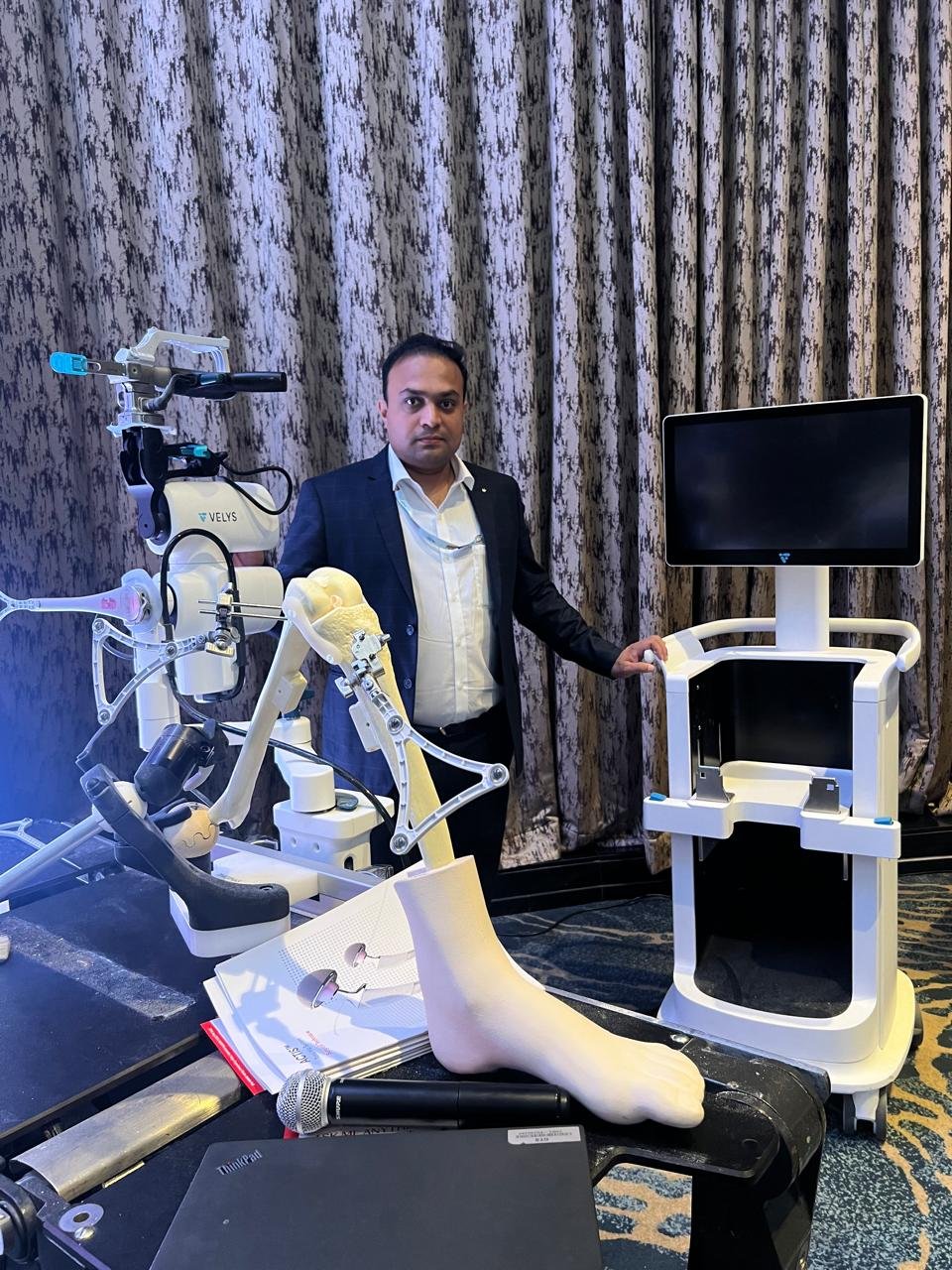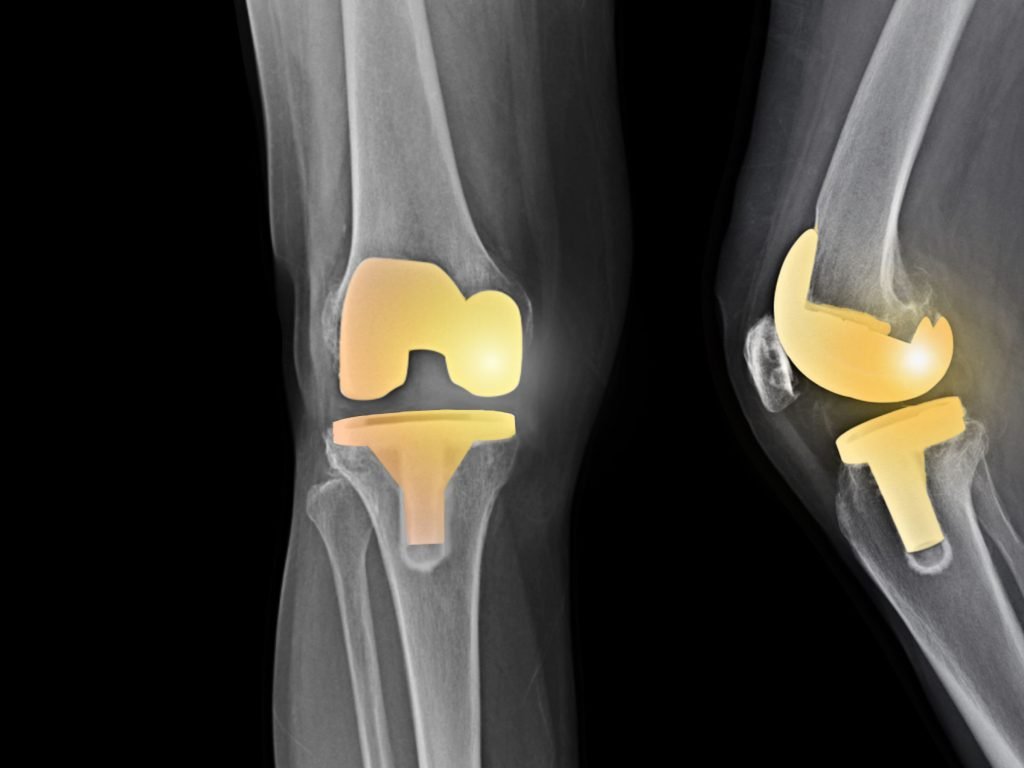Meet Our Doctor

Dr. Prajaktam M. Lende
ORTHOPAEDIC & JOINT REPLACEMENT SURGEON
Fellowships
- Navigation Based Joint Replacement Surgery (Hip & Knee Arthroplasty)
- Arthroscopy & Sport Medicine
- Ilizarove Surgery
- Observer Ship in Pediatric Orthopaedic Surgery (Wadia Hospital, Mumbai)
Knee Replacement In Nagpur
Home / Knee Replacement In Nagpur

Knee Replacement
Knee replacement surgery — conjointly called knee surgery (Arthritis) — will facilitate relieve pain and restore perform in severely pathologic knee joints. The procedure involves cutting away broken bone and animal tissue from your femoris, tibia and kneecap and exchange it with a man-made joint (prosthesis) product of metal alloys, top-grade plastics and polymers.
In decisive whether or not a knee replacement is true for you, Associate in Nursing orthopedical operating surgeon assesses your knee’s vary of motion, stability and strength. X-rays facilitate confirm the extent of injury.
Your doctor will make a choice from a range of knee replacement prostheses and surgical techniques, considering your age, weight, activity level, knee size and form, and overall health.
What is knee replacement ?
During knee replacement surgery, the operating surgeon takes broken animal tissue and bone out of the ginglymus and replaces them with a manmade joint. The operation is additionally referred to as knee surgery, and it’s one among the foremost common bone surgeries within the U.S. In some cases, it will be done robotically.
If your knee is severely broken by disease or injury, it’s getting to be toilsome for you to perform simple activities, like walking or ascension stairs. you’ll even begin to feel pain whereas you’re sitting or lying down.
If medical procedure treatments like medications and exploitation walking supports don’t seem to be any more helpful, you’ll would like to ponder total knee replacement surgery. Joint replacement surgery might be a secure and effective procedure to alleviate pain, correct leg deformity, and assist you resume ancient activities.
Anatomy
The knee is that the biggest joint among the body and having healthy knees is required to perform most everyday activities.The knee is formed of the lower end of the leg bone (femur), the upper end of the os longum (tibia), and so the kneecap (patella). The ends of these three bones unit lined with part cartilage, a sleek substance that protects the bones and permits them to maneuver merely within the joint.
The menisci unit placed between the femoris and os longum. These C-shaped wedges act as “shock absorbers” that cushion the joint.
Large ligaments hold the femoris and os longum on and provide stability. The long thigh muscles give the knee strength.
All remaining surfaces of the knee unit lined by a thin lining stated because the membrane. This membrane releases a fluid that lubricates the cartilage, reducing friction to merely concerning zero during a} very healthy knee.
Normally, all of these parts add harmony. but illness or injury can disrupt this harmony, resulting in pain, muscle weakness, and reduced operate.
Cause
The most common reason behind chronic knee pain and incapacity is disease. although there unit many types of disease, most knee pain is caused by merely three types: chronic joint unwellness, arthritis, and post-traumatic disease.
Osteoarthritis. usually this can be} often Associate in Nursing age-related “wear and tear” type of disease. it continually happens in people fifty years aged and older, but may occur in younger people, too. The cartilage that cushions the bones of the knee softens and wears away. The bones then rub against one another, inflicting knee pain and stiffness.
Rheumatoid disease. usually this can be often an illness in that the membrane that surrounds the joint becomes inflamed and thickened. This chronic inflammation can injury the cartilage and eventually cause cartilage loss, pain, and stiffness.
Post-traumatic disease. this may follow a major knee injury. Fractures of the bones shut the knee or tears of the knee ligaments may injury the part cartilage over time, inflicting knee pain and limiting knee operate.
Anatomy of the knee
Joints are the areas where two or more bones meet. Most joints are mobile, allowing the bones to move. Basically, the knee is 2 long leg bones held together by muscles, ligaments, and tendons. Each bone end is covered with a layer of cartilage that absorbs shock and protects the knee.
The knee consists of the following:
Tibia. This is the shin bone or larger bone of the lower leg.
Femur. This is the thighbone or upper leg bone.
Patella. This is the kneecap.
Before the procedure
Your doctor will explain the procedure to you and offer you the opportunity to ask any questions that you might have about the procedure.
You will be asked to sign a consent form that gives your permission to do the procedure. Read the form carefully and ask questions if something is not clear.
In addition to a complete medical history, your doctor may perform a complete physical examination to ensure you are in good health before undergoing the procedure. You may undergo blood tests or other diagnostic tests.
Risks of the procedure
As with any surgical procedure, complications can occur. Some possible complications may include, but are not limited to, the following:
- Bleeding
- Infection
- Blood clots in the legs or lungs
- Loosening or wearing out of the prosthesis
- Fracture
- Continued pain or stiffness
Best AVN treatment In Nagpur
Dr. Prajaktam Lende is a trusted Orthopedic doctor In Nagpur. Top joint Replacement surgery Doctor in Nagpur. Book an Appointment with Dr Prajaktam M. Lende, one of the prominent orthopaedic surgeon specialised in Joint Replacement surgery and ligament Reconstruction surgery Dr Prajaktam M. Lende at Nagpur. He is currently associated with the Orthopedic & Joint …
